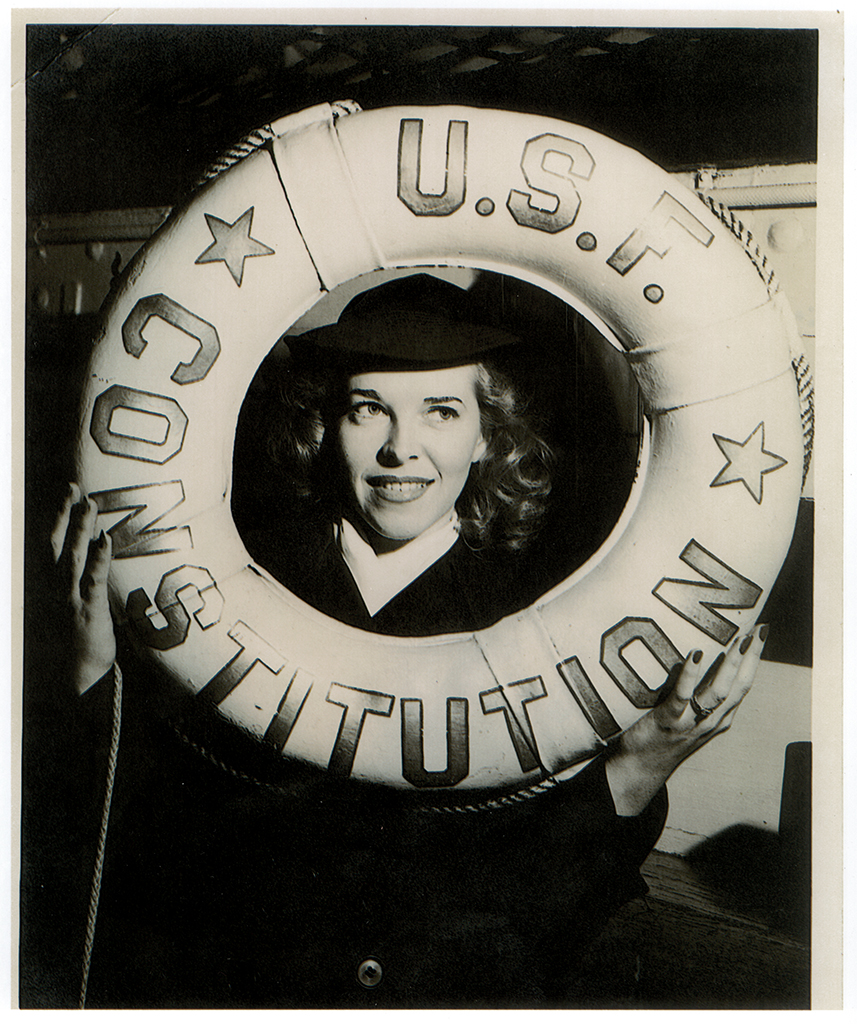USS Constitution sailed into fame and earned the nickname “Old Ironsides” in the War of 1812 battle against HMS Guerriere. During those 35 minutes of intense engagement, more than 450 officers, sailors, and Marines sailed and fought the U.S. Navy frigate to a decisive victory. In such a physically close battle (the two warships actually collided in the first 15 minutes), both the U.S. and Royal Marines played important roles as sharpshooters stationed aloft on the fighting tops.
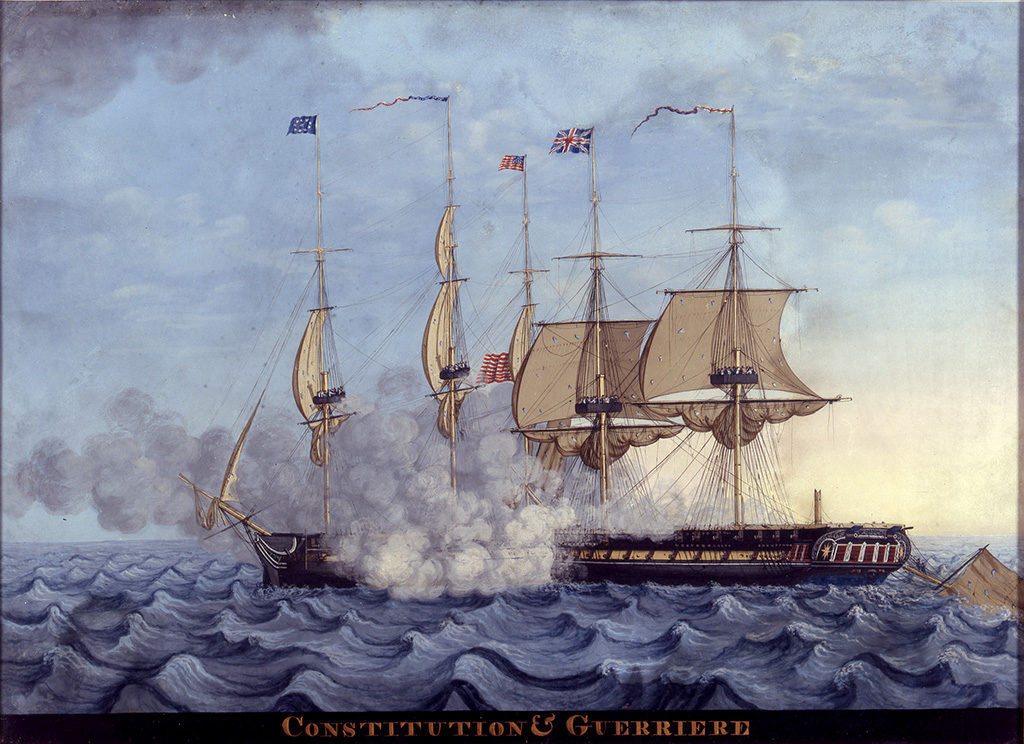

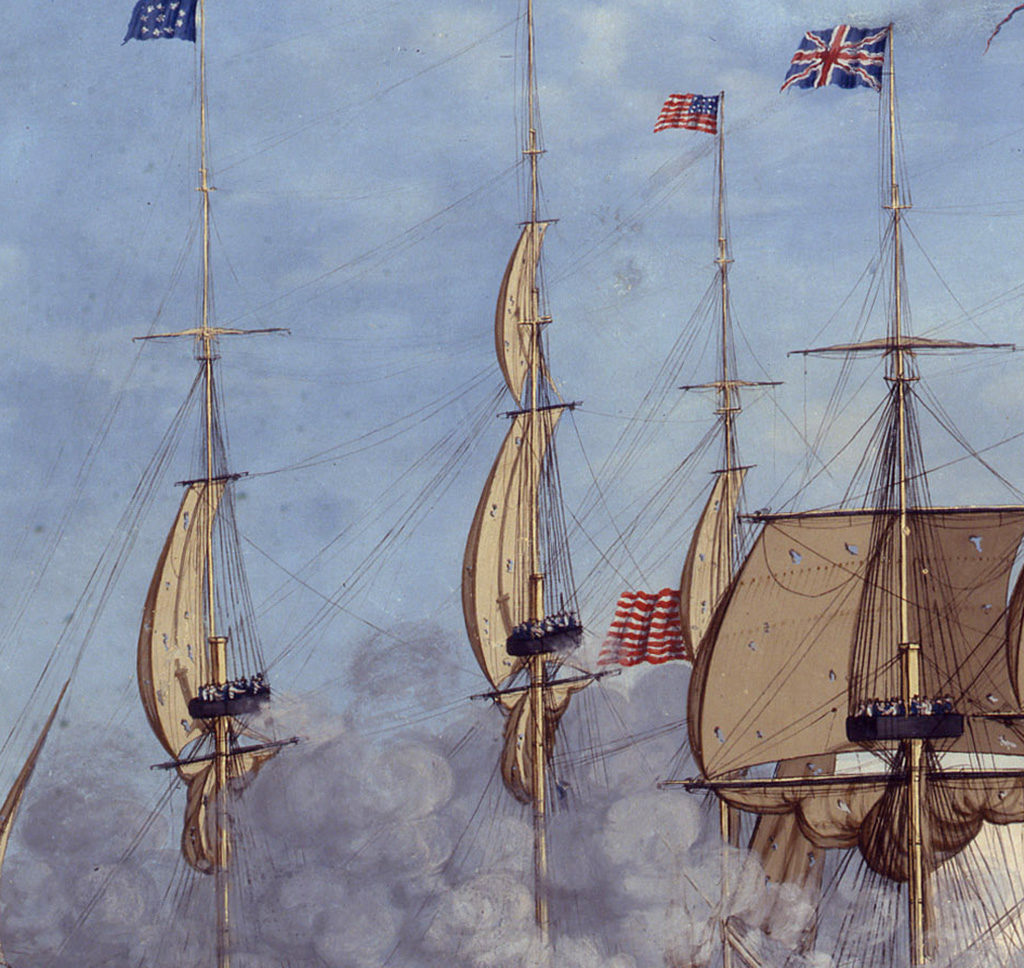

After the battle, Captain James R. Dacres of the defeated HMS Guerriere lamented to Vice Admiral Herbert Sawyer:
“I am sorry to say we suffered severely in killed and wounded and mostly whilst [Constitution] lay on our Bow from her Grape and Musketry, in all 15 kill’d and 63 wounded, many of them severely; none of the wounded Officers quitted the Deck till the firing ceas’d.”
USS Constitution Ordinary Seaman Moses Smith recalled seeing four to five women aboard Guerriere “engaged in passing powder, and other munitions of war.” As women were not allowed to be sailors at that time, these women were presumably wives of warrant officers who became swept up in the action as the battle ensued.
The story goes that among Constitution‘s more than 50 Marines in the Guerriere battle, one was a woman named “Louisa Baker,” disguised as “George” Baker. In 1815, the Boston publisher Nathaniel Coverly, Jr. issued a slim pamphlet entitled, “An Affecting Narrative of Louisa Baker…,” purporting to be the true tale of a woman whose real name was Louisa Baker (also referred to as Lucy Brewer), a native of Plymouth, Massachusetts. According to the tale, Baker/Brewer dressed as a man and served aboard Constitution as a Marine for both the Guerriere and Java battles. In it she writes:
“Encouraged by the active part which [Deborah Sampson] had taken [as a soldier] in the [American Revolution], without exposing her sex, I viewed this as a favourable opportunity to try my fortune in the public service of my country…this I succeeded in doing by an artful stratagem, and entered as a marine, received my advance and clothing, and the next day was taken on board [Constitution]!”
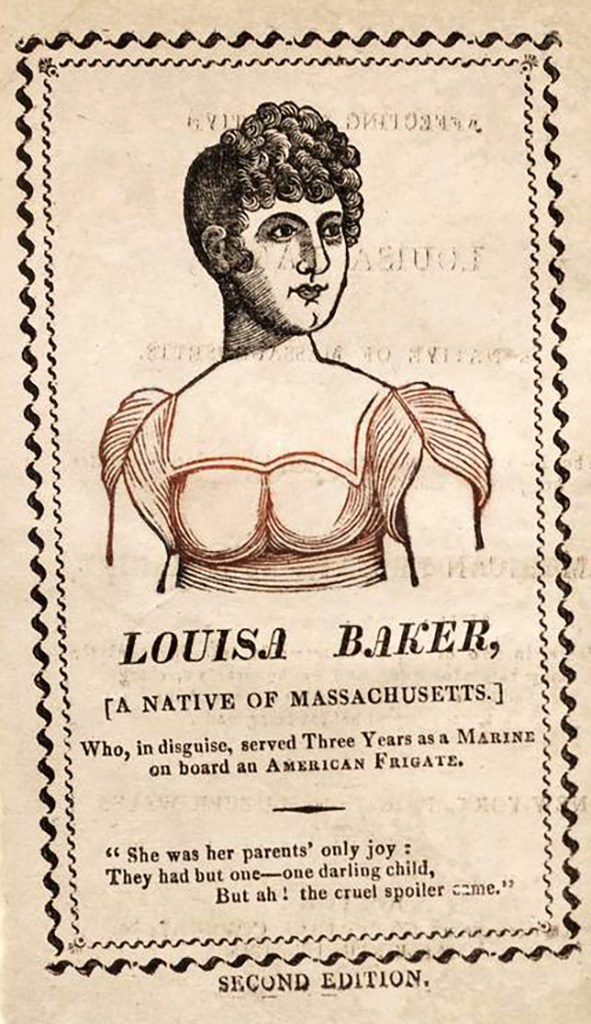

“Thus for nearly three years had I passed for and performed the duty of a marine, on board a frigate the most calibreous [sic] of any in the American navy; during which time I have been in three severe engagements, and never absented myself from my post in time of danger.—I have like others of the ship’s crew, freely associated with my shipmates, both at sea and on shore; and yet, as extraordinary as it may appear, I have not the most distant idea that a single soul on board ever had the least suspicion of my sex.”
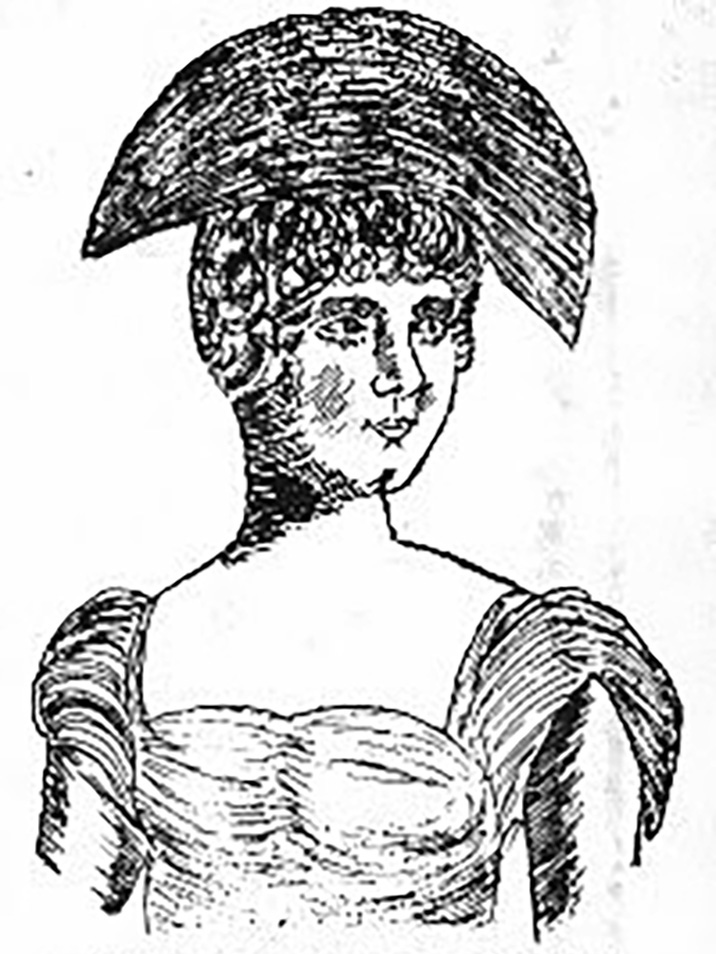

The narrative was wildly popular and reprinted in at least 21 editions between 1815 and 1818. Baker’s story continued in two sequels which were equally popular.
The story of the heroic female Marine was later used as a recruiting tool to inspire women to join the Marine Corps Women’s Reserve. Although completely fictional and likely written by an author named Nathaniel Hill Wright, the story was so convincing a tale that it was believed by both the Marines and the public to be true. It was only in the late 20th century that scholars proved that Louisa Baker/Lucy Brewer never existed. Indeed, no woman had fought aboard Constitution during the War of 1812.
In the late 1930s, as the United States responded to the threat of war in Europe, President Franklin D. Roosevelt ordered an increase in the size of the U.S. Navy. The number of civilian employees working in the Boston Navy Yard increased exponentially — from 2,860 in June 1938 to around 17,000 in mid-1941, and again to over 50,000 by mid-1943. The added employees allowed the Navy Yard to build, convert, and repair ships to the levels demanded by wartime needs. Many nontraditional workers, including women, were hired to fill these positions. At its height, between 15 and 20 percent of the Navy Yard’s workforce was comprised of civilian women.
In the midst of World War II, other women joined the Marine Corps Women’s Reserve and the United States Naval Reserve (Women’s Reserve), better known as the WAVES (Women Accepted for Volunteer Emergency Service). The WAVES program was signed into law by President Roosevelt on July 30, 1942. This law authorized the U.S. Navy to accept women into the Naval Reserve as both commissioned officers and enlisted personnel.
Most WAVES officer candidates trained at Smith College in Northampton, Massachusetts, which was designated the U.S. Naval Reserve Midshipmen’s School. Although the WAVES, like the general U.S. Navy at the time, was primarily white, 72 African American WAVES served on a fully integrated basis at all ranks.
The first African-American woman officers were highlighted in an article by Dr. Regina T. Akers, Naval History & Heritage Command Historian, published in October 2016 on the U.S. Navy blog The Sextant.
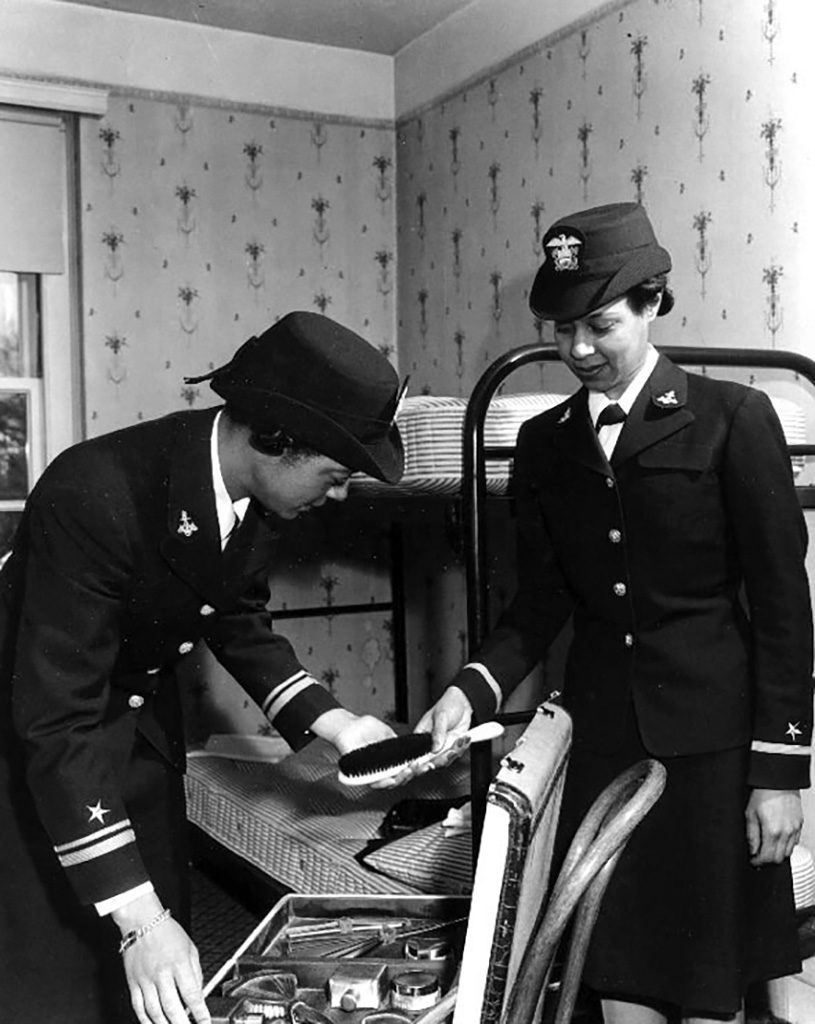

Following their training, WAVES recruits served at 900 shore stations and took up jobs previously held by men. Officer WAVES initially served in administrative and support roles, and others later served as attorneys and engineers.
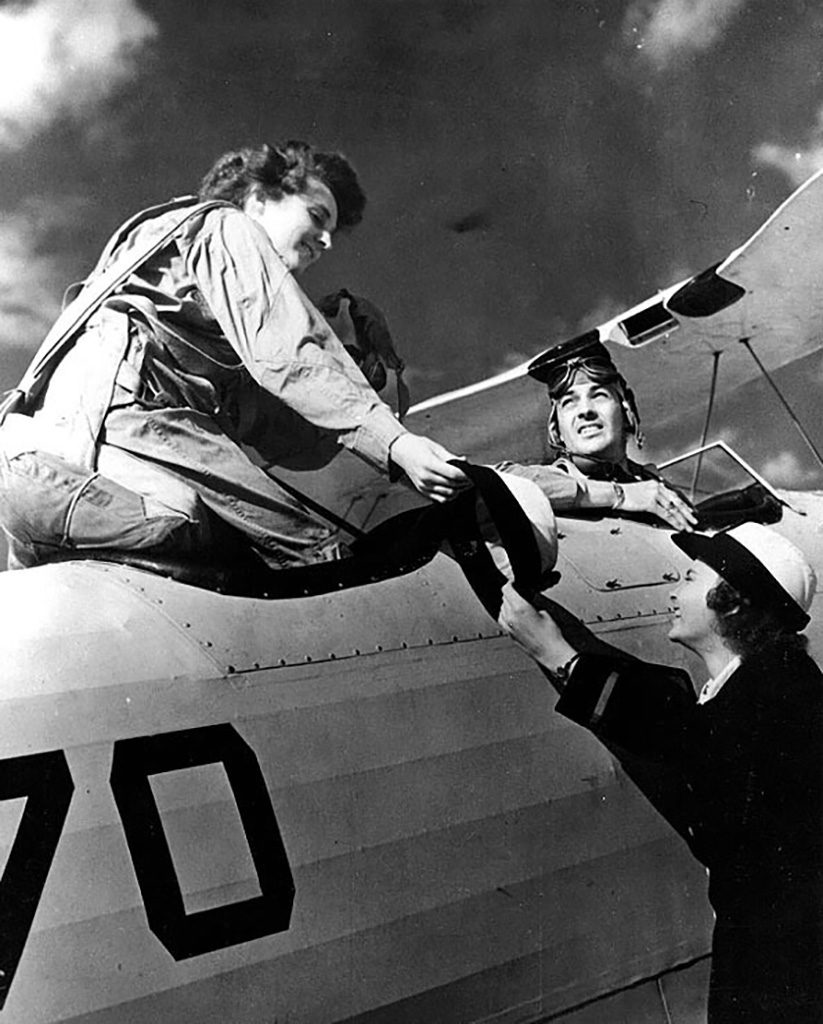

USS Constitution, on the other hand, served a primarily symbolic role during WWII. President Roosevelt, a former Assistant Secretary of the Navy, was keenly interested in the early U.S. Navy and made his first visit to the Charlestown Navy Yard on August 10, 1940. Later that month, on August 24, 1940, the president requested that both Constitution and USS Constellation, the latter berthed in Newport, Rhode Island, be recommissioned as symbolic flagships for the Atlantic and Pacific fleets.
![Aerial view of Boston Navy Yard, Boston, Massachusetts, in 1942. The Navy Yard is nearly at its full force of 50,000 workers, principally repairing warships damaged in battle. Can you spot USS Constitution amidst the piers and U.S. Navy vessels? Note the flat landscape in the top of the photo, known as Jeffrey Field (now Logan International Airport). [Courtesy of the National Archives and Records Administration, ARC 7329867]](/wp-content/uploads/2016/08/BostonNavyYard_WW2full-1024x817.jpg)
![Aerial view of Boston Navy Yard, Boston, Massachusetts, in 1942. The Navy Yard is nearly at its full force of 50,000 workers, principally repairing warships damaged in battle. Can you spot USS Constitution amidst the piers and U.S. Navy vessels? Note the flat landscape in the top of the photo, known as Jeffrey Field (now Logan International Airport). [Courtesy of the National Archives and Records Administration, ARC 7329867]](/wp-content/uploads/2016/08/BostonNavyYard_WW2full-1024x817.jpg)
Constitution was moved to different piers throughout WWII, thereby keeping the ship away from the most active sections of the Navy Yard. A low house was built over its spar deck, protecting the ship and possibly eliminating the need for any repair work by the busy Yard workers. Under the command of Clarence E. McBride, a retired Lieutenant recalled to active duty, Constitution also served as a place of confinement for Navy officers awaiting courts martial. The officers were kept in the Captain’s cabin aft on the gun deck, with Navy Yard Marines and ship’s crew as sentries at the cabin doors.
WWII finally drew to a close and between V-E Day (Victory in Europe) on May 8, 1945 and V-J Day (Victory over Japan) on September 2, 1945, Constitution was the subject of a photo spread in the Boston Sunday Globe as an “enduring symbol of the nation’s seapower.” Helping to bring the U.S. Navy’s and Constitution‘s heritage to life, several WAVES and Marine Corps Women Reservists were photographed in publicity shots around and aboard “Old Ironsides” in June 1945.
![Boston Sunday Globe Pictorial, June 17, 1945 of the WAVES and Women Marines on USS Constitution. Photos by Navy Public Relations Office. [Courtesy of The Boston Globe Digital Archives, accessed via ProQuest]](/wp-content/uploads/2016/08/WAVES-Women-Marines-2-699x1024.jpg)
![Boston Sunday Globe Pictorial, June 17, 1945 of the WAVES and Women Marines on USS Constitution. Photos by Navy Public Relations Office. [Courtesy of The Boston Globe Digital Archives, accessed via ProQuest]](/wp-content/uploads/2016/08/WAVES-Women-Marines-2-699x1024.jpg)
Photographed were Yeoman 1/c Anne Elizabeth Madden Malick of Malden, Massachusetts, Lieutenant (jg) Lillian Cryan of Lynn, Massachusetts, Seaman 1/c Barbara Amarni of Somerville, Massachusetts, and Marine Corps Women’s Reservist Lieutenant Mary Mitchell of Los Angeles, California.
Yeoman Malick joined the WAVES in 1943. She began her Navy service in Washington, D.C., in communications and was eventually attached to the Office of Intelligence, First Naval District in Boston. Malick was honorably discharged at the war’s end in 1945. In a letter written in 2001 to the USS Constitution Museum, Malick (now Anne Harrington) recalled that “along the way, I received a medal for qualifying as an expert with a .38-calibre revolver.”
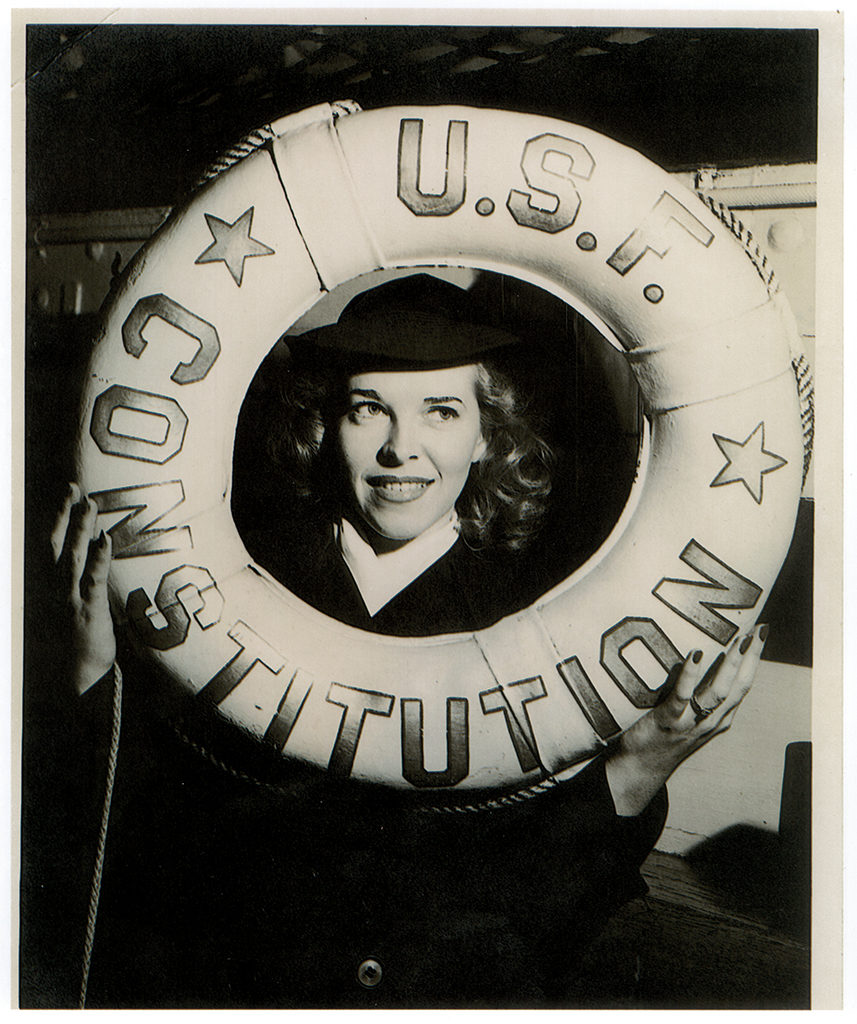

One month after the Boston Globe pictorial spread, as WWII was winding down, USS Constitution entered Dry Dock 1 in the Charlestown Navy Yard on July 28, 1945. This was the first docking since 1936 and the navy was anxious to determine the ship’s underwater condition. Test borings taken of the ship’s hull indicated that it was in very good condition. Similar to the 1936 docking, a number of copper sheets on the lower hull had to be replaced, especially at the waterline. “Old Ironsides” was refloated that August.
![[Courtesy Naval History & Heritage Command Detachment Boston]](/wp-content/uploads/2016/08/scan0008-1024x807.jpg)
![[Courtesy Naval History & Heritage Command Detachment Boston]](/wp-content/uploads/2016/08/scan0008-1024x807.jpg)
Today, women employed by Naval History & Heritage Command Detachment Boston are an integral part of USS Constitution‘s modern restorations. Several women ship restorers have worked on the 1992, 2007, and 2015 restorations as carpenters riggers, sailmakers, and caulkers.
![NHHC Detachment Boston ship restorer Kelsey Raver planes a new starboard bow plank. [Courtesy U.S. Navy. Photo by MCSN Victoria Kinney]](/wp-content/uploads/2016/08/150917-N-XP344-085-1024x731.jpg)
![NHHC Detachment Boston ship restorer Kelsey Raver planes a new starboard bow plank. [Courtesy U.S. Navy. Photo by MCSN Victoria Kinney]](/wp-content/uploads/2016/08/150917-N-XP344-085-1024x731.jpg)
![NHHC ship restorer Anita Petricone drives oak plugs into holes left behind after a hull plank and its fasteners have been removed. [Courtesy Naval History & Heritage Command Detachment Boston]](/wp-content/uploads/2016/08/IMG_6016-1024x729.jpg)
![NHHC ship restorer Anita Petricone drives oak plugs into holes left behind after a hull plank and its fasteners have been removed. [Courtesy Naval History & Heritage Command Detachment Boston]](/wp-content/uploads/2016/08/IMG_6016-1024x729.jpg)
Women also play an integral role as part of USS Constitution‘s crew. While Louisa Baker/Lucy Brewer’s story of service aboard Constitution may have been pure fiction over 200 years ago, women have been serving honorably aboard “Old Ironsides” since the first female crew member, Rosemarie Lanam (now Wilamowski), joined in 1986. A decade later, Constitution‘s first woman executive officer, Lieutenant Commander Claire V. Bloom, served as second in command from 1996 to 1998. LCDR Bloom’s uniform, epaulette, shoes, and handbag are on display at the USS Constitution Museum and featured in an artifact video.
![Lieutenant Commander Claire V. Bloom, second in command of USS Constitution from 1996 to 1998. [Courtesy U.S. Navy]](/wp-content/uploads/2016/08/33_2620_Bloom-825x1024.jpg)
![Lieutenant Commander Claire V. Bloom, second in command of USS Constitution from 1996 to 1998. [Courtesy U.S. Navy]](/wp-content/uploads/2016/08/33_2620_Bloom-825x1024.jpg)
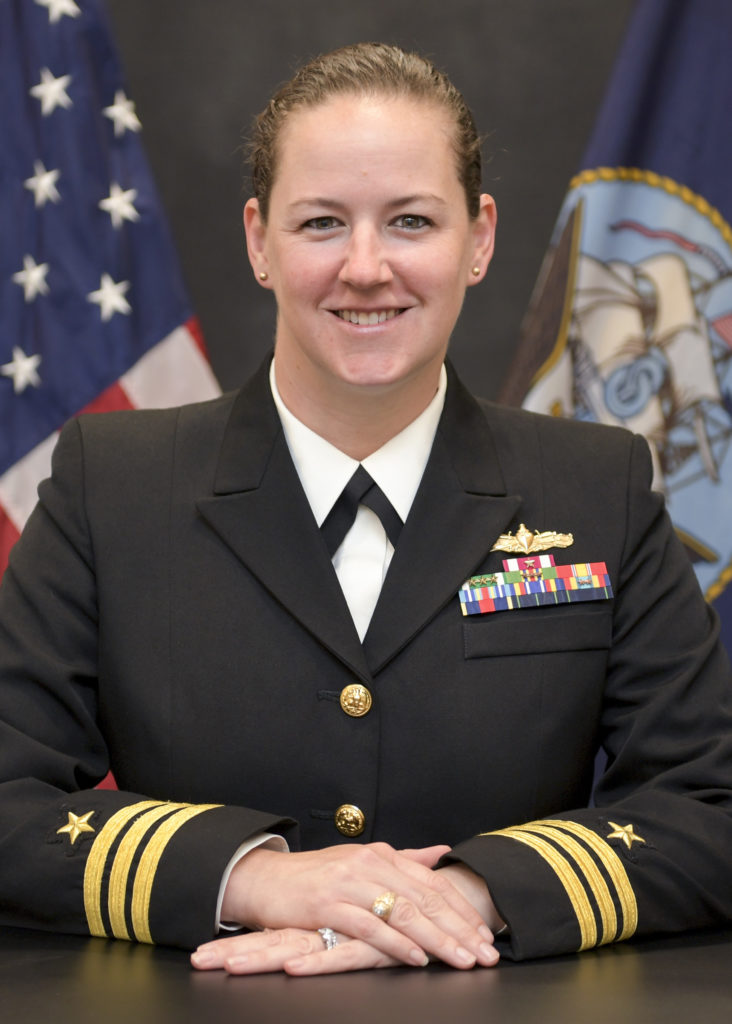

_____
The activity that is the subject of this blog article has been financed in part with Federal funds from the National Maritime Heritage Grant program, administered by the National Park Service, U.S. Department of the Interior, through the Massachusetts Historical Commission, Secretary of the Commonwealth William Francis Galvin, Chairman. However, the contents and opinions do not necessarily reflect the views or policies of the Department of the Interior, or the Massachusetts Historical Commission, nor does the mention of trade names or commercial products constitute endorsement or recommendation by the Department of the Interior, or the Massachusetts Historical Commission.
The Author(s)
Margherita Desy, Historian, Naval History and Heritage Command Detachment Boston
Historian, Naval History and Heritage Command
Margherita M. Desy is the Historian for USS Constitution at Naval History and Heritage Command Detachment Boston.
Kate Monea
Manager of Curatorial Affairs, USS Constitution Museum
Kate Monea is the Manager of Curatorial Affairs at the USS Constitution Museum.
Phaedra Scott
Content Developer, USS Constitution Museum
Phaedra Scott was the Content Developer at the USS Constitution Museum from 2016 to 2017.
